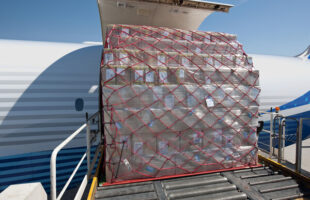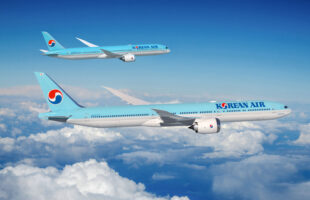Tinseth said that between now and 2028, the Asia-Pacific air travel market will grow from a 32 per cent share of the world market to 41 per cent – “it will be the future of aviation,†he added. This growth will see a demand for 8,160 aircraft worth US$1.13 trillion, in part driven by the success low cost carriers are and will enjoy in the market.
Cargo growth over the period will average 5.4 per cent – revised downward from the earlier forecast 5.8 per cent growth – and will create a demand for 710 new freighters in the Asia Pacific region (3,250 freighters globally) according to Jim Edgar, regional director Cargo Marketing at Boeing Commercial Airplanes.
For the region, nearly 70 per cent of the cargo aircraft will be production freighters, worth US$170 billion – predominantly large intercontinental freighters – with theremainder being conversions.

Edgar noted that Boeing aircraft currently provide nearly 90 per cent of global cargo capacity, of which 50 per cent is from 747s alone. “So freighters are very important to the Boeing Company and likewise Boeing freighters are very significant for the market, particularly in Asia where in the large freighter segment, 60 per cent are operated by Asian-domiciled customers.â€Â
While Boeing’s new 777 freighter which debuted last year has 71 firm orders from 11 customers, its newest freighter offering, the redesigned 747-8 freighter has garnered 78 firm orders from nine customers worldwide. The 747-8F was to have its firstflight by year-end with delivery by third quarter next year, but Boeing has recentlyannounced a second delay which will pushdelivery to the fourth quarter of 2010.
“As the programme assembled major components of initial 747-8 freighters during the third quarter, it became clear that late maturity of engineering designs has caused greater than expected re-work and disruption in manufacturing,†Boeing said in the statement. Boeing now expects the first flight of the 747-8F to occur by early next year, with the flight test programme taking place in 2010.
Noting that it is the first time in history that there has been a two-years in a row, back-to-back decline in cargo growth which has led to a severe traffic decline and subsequent yield erosion, which have both had an adverse impact on profitability for Boeing’s customers.
Edgar noted that of the entire global freighter fleet, nearly 24 per cent are parked compared with 11 per cent of global fleet of all commercial aircraft, but for larger freighters the figure is 11 per cent similar to overall global fleet. He added that there are 80-100 747 Classics that could be parked going forward.
Looking at the cargo figures into June and July, Edgar noted there had been 13 months of consecutive decline and while air cargo fell faster and deeper than maritime cargo, he also anticipates the recovery will be faster and higher than maritime trade. Air cargo typically is an early indicator of global economic health and in fact tends to lead both general economic indicators and passenger growth by three to six months, he added.
“Unlike previous situations we’ve found ourselves in, this particular economic situation is more consumption and investment driven so the recovery we anticipate will be a bit slower and it will be related not as much to macro economic changes as it will to specific consumption level and investment changes.â€Â
But despite the unprecedented contraction Edgar remains confident in the strength of the global air cargo market over the long haul. “The air cargo industry is supported by sound fundamentals – the imperative for speed, consumer product innovation and global industrial interdependence are key drivers – as well as global GDP projections of about threeper cent annual growth.â€Â









